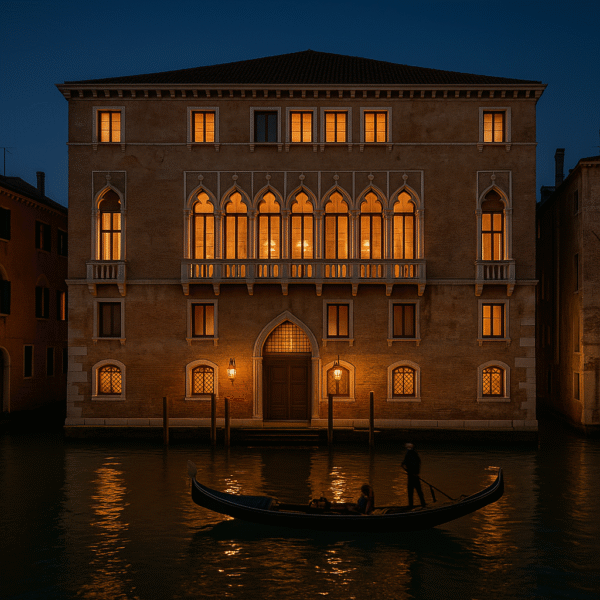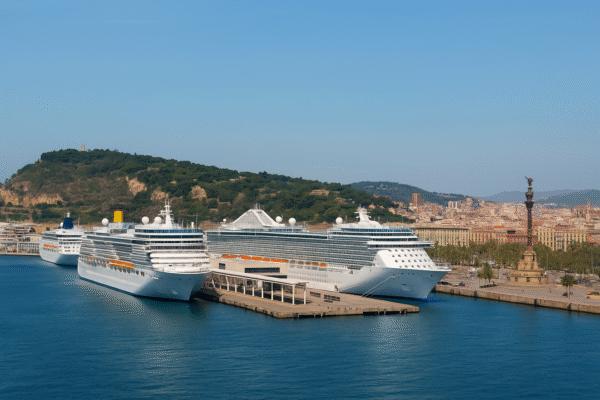In a landmark move that could redefine how major cities manage overtourism, Barcelona has announced it will reduce the number of cruise ship docks at its bustling port starting in 2026. The policy, agreed upon by the Barcelona City Council and the Port of Barcelona Authority, seeks to address mounting concerns over mass tourism, environmental degradation, and the strain on local communities—issues that have long plagued one of Europe’s most visited cities.
Barcelona is the busiest cruise port in Europe and one of the most congested urban tourism hubs in the world. In 2024 alone, the city received a record 1.6 million cruise transit passengers—day visitors who typically disembark in the morning, flood the city’s popular sites, and return to their ships by evening. This influx has placed enormous pressure on neighborhoods like La Rambla, the Gothic Quarter, and El Raval, where locals have voiced growing frustration over noise, crowding, and soaring rents driven by short-term vacation rentals.
Starting next year, the number of cruise ship docks will be reduced from seven to five. According to the Port of Barcelona, the measure will directly reduce the number of daily vessel calls and help manage crowd flow in the city center. This policy is part of a broader strategy to transition Barcelona’s port infrastructure into a greener, more sustainable operation.
Addressing Local Discontent and Tourism Saturation
The decision follows a wave of anti-tourism demonstrations that peaked in July 2024, when protestors sprayed water at visitors and held signs warning of the city’s unsustainable tourism model. Residents have long complained about the conversion of apartments into holiday rentals and the commercialization of local neighborhoods, which have driven up housing costs and displaced long-term residents.
Ada Colau, the former mayor of Barcelona who initially pushed for port reform, called the move “a critical step in giving the city back to its residents.” Her successor, Jaume Collboni, has continued that agenda, emphasizing that tourism must respect Barcelona’s social fabric and environmental limits.
Environmental Benefits of Cruise Reduction
In addition to cutting back on visitor volume, the new agreement prioritizes environmental sustainability. The Port of Barcelona has committed to equipping cruise terminals with shore power infrastructure by 2026. This means that docked vessels will be able to connect to the local electric grid—powered increasingly by renewables—allowing them to shut down their diesel engines, which emit significant levels of nitrogen oxides, sulfur dioxide, and particulate matter.
According to the European Commission, emissions from large cruise ships can rival those of thousands of cars in a single day. By electrifying port operations, Barcelona could cut harmful air pollutants by up to 50%, while also reducing greenhouse gas emissions in line with Spain’s 2030 Climate and Energy Framework.
The Spanish government has echoed support for Barcelona’s actions. Minister of Transport and Sustainable Mobility Óscar Puente noted that Barcelona’s cruise reforms align with national sustainability goals under Spain’s Tourism Strategy 2030, which focuses on innovation, digitalization, and climate resilience.
Economic Trade-Offs and Tourism Rebalancing
While some industry stakeholders have raised concerns about the potential economic impact of reducing cruise traffic, city officials argue that Barcelona’s tourism sector must evolve. “We are not turning away tourism,” said Mayor Collboni. “We are rebalancing it. The future lies in quality over quantity.”
Barcelona continues to attract around 32 million visitors annually, with cruise passengers making up only a fraction of total arrivals. The city plans to pivot towards longer-stay tourism that generates more economic value while exerting less daily pressure on urban infrastructure.
According to the Barcelona Tourism Observatory, overnight visitors contribute significantly more to local businesses and accommodations than day-trippers, suggesting that a sustainable model focused on longer stays could support both economic and community well-being.
A Model for European Cruise Port Reform?
Barcelona’s reforms may soon serve as a blueprint for other European cities grappling with similar issues. Cities like Venice, Amsterdam, and Dubrovnik have already begun imposing limitations on cruise arrivals, citing environmental and social strain. Barcelona’s integrated approach—combining port modernization with resident-first urban planning—sets a precedent for comprehensive cruise management.
Environmental advocates, including the Clean Cruise Ship Coalition and Transport & Environment, praised the move as a “watershed moment” for maritime tourism in Europe. “Barcelona is showing that popular destinations don’t have to choose between welcoming tourists and protecting their cities,” said T&E spokesperson Carlos Calvo Ambel.
Looking Ahead
The Port of Barcelona has announced a €110 million investment in electrifying its docks and reconfiguring the terminal layout to accommodate fewer but more sustainable ship calls. The upgrades are expected to be completed by late 2026, just in time for the anticipated cruise industry rebound.
As the global tourism industry continues to adapt to post-pandemic realities and increasing climate awareness, Barcelona’s bold steps highlight a growing commitment to sustainability, community well-being, and long-term destination stewardship.
For more travel news like this, keep reading Global Travel Wire



















